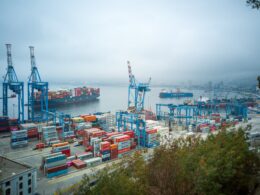There was a time, as little as a decade ago, when we walked into a brick and mortar store looking for a top or a pair of jeans and perhaps couldn’t quite find what we were looking for. We would accept that the item was unavailable and sometimes we were told when to pop back in if the item needed to be re-stocked. In some cases, we would return to the store if we had time, maybe try somewhere else or decide not to purchase that item after all. It wasn’t such a big deal.
Ten years later everything has changed. Today, if a customer wants a new shirt or dress, they can visit a store and realise the size and colour is out of stock. The sales person will whip out her tablet and check the stock online. The item is ordered and delivered to the customers home or the nearest click and collect store. The customer gets the goods the next day, it fits and the customer is happy.
The alternative is unacceptable. Consumers demand that a retailer tells them how and when an item is available and it needs to be a seamless process in acquiring those goods that makes the customer happy. It is now a big deal. And this is just one facet of the top five supply chain pressures now facing fashion brands and retailers:
- Consumerism
Fashion retailers are being forced to be hyper sensitive to consumers’ needs and wants. Consumers demand variety and new products. Consider fast fashion apparel. Consumers want to see the red carpet outfit of their favorite celebrity in the racks or online within days or weeks. This means an exponential growth in collections, product ranges, SKUs, and packaging options, all of which can put pressure on the supply chain and create complexity in product development, sourcing, planning, production, and fulfillment.
- Brand Sensitivity & Loyalty
If the supply chain fails to deliver, it’s the brand’s name that is impacted. Retailers and fashion brands have very long and sensitive supply chains. A number of variables can impact a brand’s quality or name. If items are consistently out of stock, people will shop elsewhere. If product quality is not up to scratch then people will shop elsewhere and complain on social media. If a brand is reported for treating workers unfairly then people may shop elsewhere and criticize the brand on social media and tell their friends. Recent research looking at the Millennial market suggests that these ethical aspects could be vital and that supply chain considerations are paramount in developing loyalty.
- Sustainability
Most big fashion brand websites today display something about corporate responsibility and sustainability. Today’s big brands need to be seen implementing some form of sustainability strategy. Consumers are hyper aware of how retailers and brands operate regarding their water consumption, waste disposal, acceptable labour practices, health and safety standards, treatment of workers and other issues. If a brand’s name is related to any of these topics in a negative way, it will be effected.
- Inventory Intelligence
Fashion retailers and brands are forever contending with the volatile issue of seasonality – having to ramp up inventories and then deplete them quickly but cost-effectively. For example, if a summer hasn’t been hot enough fashion retailers will find themselves slashing prices and diluting margins trying to get rid of stock that isn’t selling, and in parallel bringing on the apparel that wasn’t due out on the shelves until later in the season. Stock visibility, inventory intelligence, and operational agility to quickly change tack in a timely manner are necessities in today’s fashion supply chain.
- The Black Friday Effect
Black Friday in recent years has been considered the official start of the holiday shopping season. Retailers draw in the crowds both online and in store by offering huge discounts on everything from home furnishings to apparel.
This notion of Black Friday and Cyber Monday has gradually started to become less important in the retail world. We are in a world of constant commerce. Commerce is now 24/7/365. It doesn’t matter where, when, or how you shop. Black Friday used to be a day that revolved around the customer – deals and promotions. Now, that’s every day. In fact, some retailers are considering not opening on Black Friday and are giving their employees the day off because they realize it doesn’t actually drive sales as much as it used to.
This lesson alone should be sobering to the fashion supply chain and is a great example of the speed of change that those involved in the industry now face. Black Friday did not exist ten years ago and it may have already peaked and be on the wane. If an entire shopping phenomenon has such a rapid lifecycle, it is clear that the fashion supply chain must now operate at blistering speed and with incredible agility if firms are to survive and grow.













